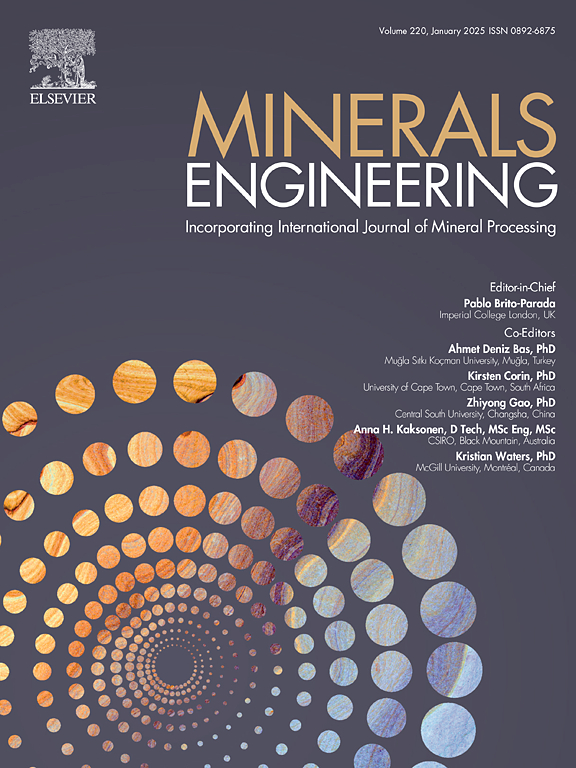支持深度学习的语义分割,用于高纯度石英中高精度流体包裹体定量
IF 4.9
2区 工程技术
Q1 ENGINEERING, CHEMICAL
引用次数: 0
摘要
流体包裹体含量是影响石英是否适合高纯加工的关键因素。虽然传统的识别方法通常是非定量的、耗时的,并且严重依赖于专家知识,但开发快速准确的方法来定量评估流体包裹体具有重要的实际意义。本研究提出利用语义分割技术,采用u - net、DeepLabV3+、PSPNet和HRNet四种语义分割模型,实现石英流体包裹体的自动识别。利用包含17个石英样品和9348张精心注释的显微图像的综合数据集,我们的对比分析表明,HRNet在流体包裹体分割方面表现优异,平均mIoU分数达到了81.75%,并且具有出色的可靠性。此外,该模型还可以计算石英及其内部流体包裹体的像元比,便于流体包裹体的自动化定量检测。这项工作不仅加快了石英流体包裹体分割过程,而且提高了可靠性,有效克服了高纯石英资源评价中的技术障碍,为高纯石英行业提供了有价值的人工智能驱动解决方案。本文章由计算机程序翻译,如有差异,请以英文原文为准。
Deep learning-enabled semantic segmentation for high-accuracy fluid inclusions quantification in high-purity quartz
Fluid inclusions content is critical factor affecting the suitability of quartz for high-purity processing. While conventional identification methods are typically non-quantitative, time-consuming and heavily reliant on expert knowledge, developing rapid and accurate methods for quantitatively assessing fluid inclusions is of great practical importance. This study proposes the use of semantic segmentation techniques to automate the process of identifying quartz fluid inclusions with four semantic segmentation models—U-Net, DeepLabV3+, PSPNet, and HRNet. Leveraging a comprehensive dataset comprising 17 quartz samples with 9,348 meticulously annotated microscopic images, our comparative analysis demonstrates HRNet’s superior performance in fluid inclusions segmentation, achieving a remarkable mean intersection over union (mIoU) score of 81.75%, and outstanding reliability. Furthermore, this model enables the calculation of the pixel ratio of quartz and its internal fluid inclusions, thus facilitating the automated quantitative detection of fluid inclusions. This work not only expedites the quartz fluid inclusions Segmentation process but also enhances reliability to effectively overcome technical barriers in high-purity quartz resource evaluation, providing a valuable AI-driven solution for the high purity quartz industry.
求助全文
通过发布文献求助,成功后即可免费获取论文全文。
去求助
来源期刊

Minerals Engineering
工程技术-工程:化工
CiteScore
8.70
自引率
18.80%
发文量
519
审稿时长
81 days
期刊介绍:
The purpose of the journal is to provide for the rapid publication of topical papers featuring the latest developments in the allied fields of mineral processing and extractive metallurgy. Its wide ranging coverage of research and practical (operating) topics includes physical separation methods, such as comminution, flotation concentration and dewatering, chemical methods such as bio-, hydro-, and electro-metallurgy, analytical techniques, process control, simulation and instrumentation, and mineralogical aspects of processing. Environmental issues, particularly those pertaining to sustainable development, will also be strongly covered.
 求助内容:
求助内容: 应助结果提醒方式:
应助结果提醒方式:


